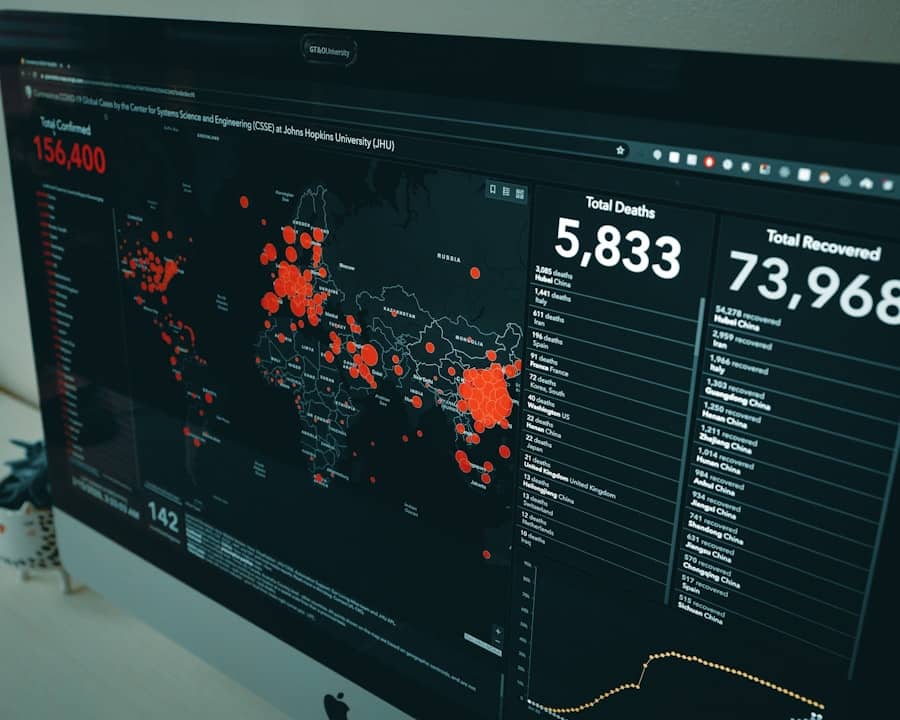The rapid evolution of technology has brought about significant advancements in various fields, and cybersecurity is no exception.
In this context, artificial intelligence (AI) has emerged as a transformative force, enhancing the capabilities of these systems.
AI’s ability to process vast amounts of data, identify patterns, and learn from experiences positions it as a critical tool in the realm of cybersecurity incident reporting. Cybersecurity incident reporting systems are designed to document, analyze, and respond to security breaches or threats. Traditionally, these systems relied heavily on manual processes, which often led to delays in response times and increased vulnerability to attacks.
The integration of AI into these systems not only streamlines the reporting process but also improves the accuracy and efficiency of threat detection and response. By leveraging machine learning algorithms and natural language processing, AI can assist in automating the identification of incidents, categorizing them based on severity, and even suggesting appropriate responses. This shift towards AI-driven incident reporting represents a significant leap forward in the fight against cybercrime.
Key Takeaways
- AI plays a crucial role in improving the efficiency and accuracy of cybersecurity incident reporting systems.
- AI can detect and analyze cybersecurity incidents in real-time, enabling faster response and mitigation of threats.
- Using AI for cybersecurity incident reporting offers advantages such as automation, pattern recognition, and predictive analysis.
- Challenges and limitations of AI in cybersecurity incident reporting include data privacy concerns, algorithm bias, and the need for human oversight.
- Best practices for implementing AI in cybersecurity incident reporting include thorough training of AI models, continuous monitoring, and collaboration between AI and human analysts.
The Role of AI in Detecting and Analyzing Cybersecurity Incidents
Overcoming Traditional Limitations
Traditional methods of detecting and analyzing cybersecurity incidents often struggle to keep pace with the sheer volume of data generated by modern networks, making it challenging to identify potential threats in real-time. AI systems, on the other hand, employ advanced algorithms that can sift through enormous datasets at unprecedented speeds, enabling the detection and analysis of cybersecurity incidents with greater efficiency.
Advanced Analytics and Pattern Recognition
AI systems, particularly those utilizing machine learning techniques, can analyze historical data to recognize patterns indicative of malicious activity. For instance, anomaly detection algorithms can flag unusual behavior within a network, such as an employee accessing sensitive files at odd hours or an unexpected surge in data transfers. This enables organizations to identify potential threats in real-time and respond promptly.
Enhanced Incident Reporting and Contextual Analysis
AI enhances the analytical capabilities of cybersecurity incident reporting systems by providing deeper insights into the nature of threats. Natural language processing (NLP) allows AI to interpret unstructured data from various sources, including emails, chat logs, and social media feeds. This capability enables organizations to gain a comprehensive understanding of the context surrounding an incident, aiding in immediate response efforts and contributing to long-term strategies for threat mitigation.
Advantages of Using AI for Cybersecurity Incident Reporting
The integration of AI into cybersecurity incident reporting systems offers numerous advantages that significantly enhance an organization’s security posture. One of the most notable benefits is the speed at which incidents can be detected and reported. AI systems can operate continuously, monitoring network activity around the clock without fatigue or distraction.
This constant vigilance allows for quicker identification of potential threats, enabling organizations to respond promptly before damage can escalate. Additionally, AI-driven incident reporting systems reduce the burden on human analysts by automating routine tasks. For instance, AI can automatically categorize incidents based on predefined criteria, such as severity or type of threat.
This automation not only saves time but also minimizes the risk of human error in incident classification. Furthermore, by handling repetitive tasks, AI frees up cybersecurity professionals to focus on more complex issues that require human intuition and expertise. This synergy between AI and human analysts creates a more efficient and effective incident response framework.
Challenges and Limitations of AI in Cybersecurity Incident Reporting Systems
Despite its many advantages, the implementation of AI in cybersecurity incident reporting systems is not without challenges and limitations. One significant concern is the potential for false positives—instances where benign activities are incorrectly flagged as threats. High rates of false positives can overwhelm security teams, leading to alert fatigue and potentially causing genuine threats to be overlooked.
Striking the right balance between sensitivity and specificity in AI algorithms is crucial to mitigate this issue. Another challenge lies in the quality and quantity of data used to train AI models. Machine learning algorithms require vast amounts of high-quality data to learn effectively; however, obtaining such data can be difficult in practice.
In many cases, organizations may lack comprehensive historical data on past incidents or may face issues related to data privacy and compliance regulations. Additionally, adversaries are constantly evolving their tactics, which means that AI models must be regularly updated to remain effective against new types of threats. This ongoing need for adaptation can strain resources and complicate the implementation process.
Implementing AI in Cybersecurity Incident Reporting: Best Practices and Considerations
When implementing AI in cybersecurity incident reporting systems, organizations should adhere to several best practices to maximize effectiveness while minimizing risks. First and foremost, it is essential to establish clear objectives for what the AI system is intended to achieve. Organizations should define specific use cases for AI integration—whether it be improving threat detection rates, enhancing incident response times, or automating reporting processes.
Having well-defined goals will guide the selection of appropriate technologies and methodologies. Furthermore, organizations should prioritize collaboration between cybersecurity teams and data scientists during the implementation process. This interdisciplinary approach ensures that the AI models are tailored to address real-world challenges faced by security professionals.
Regular communication between these groups fosters a better understanding of the types of incidents that need to be reported and analyzed, leading to more effective model training and refinement. Another critical consideration is the importance of continuous monitoring and evaluation of AI performance. Organizations should establish metrics to assess the effectiveness of their AI-driven incident reporting systems regularly.
By analyzing performance data, organizations can identify areas for improvement and make necessary adjustments to algorithms or processes. This iterative approach not only enhances the system’s accuracy but also builds trust among stakeholders regarding its reliability.
The Future of AI in Cybersecurity Incident Reporting Systems
Adapting to Emerging Threats
One promising direction is the development of more sophisticated machine learning models that can adapt in real-time to emerging threats. As cybercriminals become increasingly adept at evading traditional security measures, AI systems will need to leverage advanced techniques such as deep learning and reinforcement learning to stay ahead of potential attacks.
Revolutionizing Incident Reporting with Emerging Technologies
Moreover, the integration of AI with other emerging technologies—such as blockchain—could revolutionize incident reporting processes. Blockchain’s decentralized nature offers enhanced security and transparency for incident logs, while AI can analyze these logs for patterns or anomalies. This combination could lead to more secure and tamper-proof reporting systems that bolster organizational resilience against cyber threats.
Securing Complex Infrastructures
Additionally, as organizations continue to embrace cloud computing and remote work environments, AI will play a crucial role in securing these increasingly complex infrastructures. The ability to monitor distributed networks and identify vulnerabilities across various endpoints will become essential as cyber threats evolve alongside technological advancements.
Case Studies: Successful Implementation of AI in Cybersecurity Incident Reporting
Several organizations have successfully implemented AI-driven cybersecurity incident reporting systems, showcasing the technology’s potential benefits. One notable example is IBM’s Watson for Cyber Security, which utilizes natural language processing and machine learning to analyze vast amounts of unstructured data from various sources. By integrating Watson into their incident reporting processes, organizations have reported improved threat detection rates and faster response times.
Another case study involves Darktrace, a cybersecurity firm that employs machine learning algorithms to detect anomalies within network traffic. Darktrace’s self-learning technology continuously adapts to an organization’s unique environment, allowing it to identify potential threats that traditional systems might miss. Clients using Darktrace have experienced significant reductions in response times and enhanced visibility into their security posture.
These case studies illustrate how organizations can leverage AI technologies not only to improve their incident reporting capabilities but also to foster a proactive approach to cybersecurity that anticipates threats before they materialize.
The Impact of AI on the Future of Cybersecurity Incident Reporting
The integration of artificial intelligence into cybersecurity incident reporting systems marks a pivotal shift in how organizations approach threat detection and response. By harnessing the power of AI, organizations can enhance their ability to identify incidents swiftly and accurately while streamlining reporting processes that were once labor-intensive and prone to error. As cyber threats continue to evolve in complexity and frequency, the role of AI will only become more critical in safeguarding digital assets.
As organizations adopt best practices for integrating AI into their cybersecurity frameworks, they will not only improve their incident reporting capabilities but also foster a culture of resilience against cyber threats. The future promises exciting developments as technology continues to advance, paving the way for even more sophisticated solutions that will redefine how we approach cybersecurity incident management.
If you are interested in the latest technology trends, you may also want to check out this article on the




